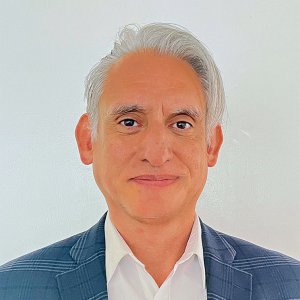New Work Modalities Require Flexible Leaders

STORY INLINE POST
Q: What are the main considerations companies should have when evaluating candidates for executive positions?
A: We are constantly facing new challenges as new variables are being continuously introduced.
New variables have forced us to build a hybrid environment, so potential candidates must show leadership and proactivity during remote shifts. We use a holistic approach when reviewing clients and candidates, prioritizing four major factors: executive skills, experience in the field, potential for growth and ability to adapt to the culture of the organization. This strategy, called “Infinity Framework,” assesses leadership potential while streamlining the recruiting process, giving a 360 view of the candidate.
Businesses are investing into improving their key performance indicators (KPI) to analyze their objectives and progress but there are not enough tools to measure employee performance accurately.
Q: What is the outlook for talent availability regarding leadership positions in the Mexican health sector?
A: Like most industries, the health sector is changing and demanding new skills. The emerging healthtech trend, for example, has clear talent gaps. The medical technology field does not have much talent available. While there are some individuals with expertise in the area, there are only a few so it is necessary to develop these people.
Heidrick & Struggles focuses on people. We understand that there is no substitution for human contact. People bring value thanks to their unique perspectives and experiences. We are committed to fostering diversity and inclusion in our work environment and to create an open, committed culture where everyone can trust their colleagues.
Q: How can other industries’ talent integrate into the pharmaceutical industry?
A: New ideas can always challenge the traditional ways of operating. Similar, strongly-regulated industries, such as tobacco and alcohol, can provide talent to the health sector, while also introducing new ideas for marketing, management and other areas. There is a learning curve, however, and many companies do not want to take on the risk of betting on workers who are not familiar with the traditional procedures of the pharmaceutical industry.
Q: How does Heidrick & Struggles combine its extensive experience in the field with new technologies and data-driven methodologies to provide the best executive search?
A: We believe that there is no substitute for human contact but we understand the intangible benefits brought about by technology and remote work, such as flexibility and the democratization of tools. For example, technology has allowed specialists to perform operations on patients across the world but there is nothing that replaces talking to the doctor after the surgery. Technology lets us have the best of both worlds: we take advantage of our experience and blend it with data analysis and AI to make most accurate decisions and find the most viable prospect for the business.
We use data to improve recruitment processes. We have alliances with leaders in AI and data management to rapidly perform the first filter of candidates and identify those who are most likely to stay longer, adapt to the culture of the organization, fulfill tasks, be digitally prepared and have all of the skills required by the position. This process gives us a smaller number of better candidates, allowing us to offer a faster response time.
Q: How has gender equality in executive positions and boardrooms advanced in Mexico?
A: While there has been an improvement, it has not been enough. There is a low percentage of women in executive positions. At the pace we are going, gender equality in executive positions will take approximately 100 years. This is too long, so we have to bolster our actions to reduce this large gap.
The generational change taking place now and those that will follow are refreshing but our generation has to make a conscious effort to collaborate and not hinder gender equality. About 19 percent of women are placed in executive positions and 40 percent in management positions, which tells us that men have to be actively involved to increase these rates. Heidrick & Struggles is also developing creative solutions to tackle this decades-long issue. In Mexico, there are positions in which female talent stands out and takes the lead. For example, women have taken almost 100 percent of HR jobs but they represent only 35 percent of supply chain jobs.
At Heidrick & Struggles, we try to lead by example. We hired a diversity officer with great experience in the field to increase gender equality in leadership positions.
Q: What are the main characteristics that second-level managers should meet to jump to top positions?
A: These managers should have experience in diverse areas of the company and know the product, services and customers. They should have leadership skills and vast experience in the environment that company operates. There are 11 managerial skills. While it is impossible for a person to excel in all of them, it is possible to identify the ones most compatible with the company and position and find someone who fulfills them.
Heidrick & Struggles is the premier provider of senior-level executive research, culture shaping and leadership consulting services. The company serves over 70 percent of the Fortune 100, with global clients in every sector.








 By Antonio Gozain | Senior Journalist and Industry Analyst -
Mon, 08/22/2022 - 10:00
By Antonio Gozain | Senior Journalist and Industry Analyst -
Mon, 08/22/2022 - 10:00














